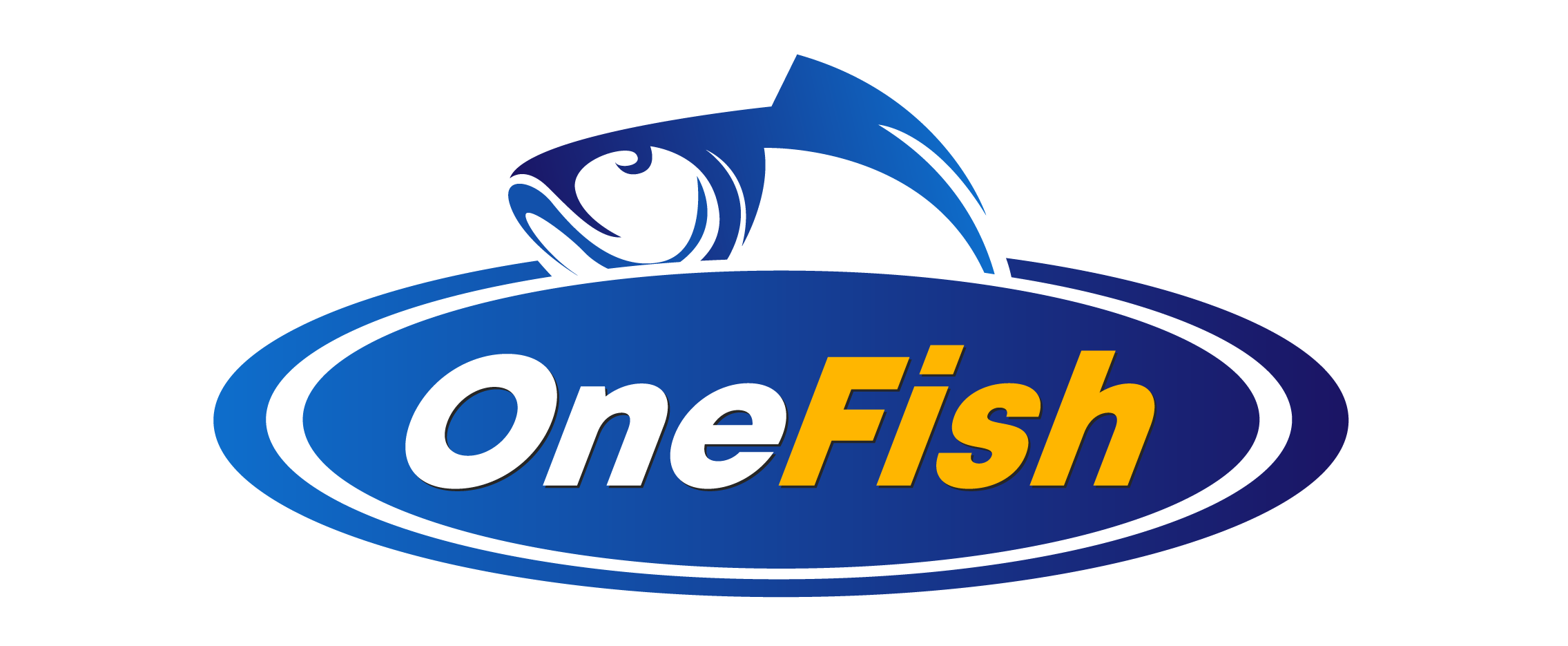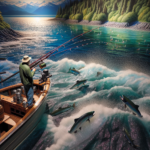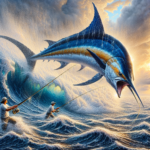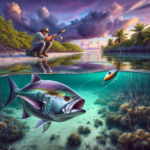Surf Fishing in North Carolina’s Outer Banks
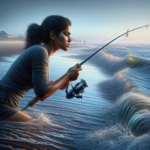
Introduction
Did you know that North Carolina’s Outer Banks is one of the premier surf fishing destinations in the United States? With its rich history, diverse marine life, and stunning coastal scenery, the Outer Banks offers an unparalleled fishing experience. This article will delve into the ins and outs of surf fishing in this unique region, covering everything from the best fishing techniques and species information to top fishing spots and seasonal considerations.
Whether you’re a seasoned angler or a novice looking to try your hand at surf fishing, understanding the nuances of this activity in the Outer Banks can significantly enhance your experience. From mastering the right techniques to knowing the best times and places to fish, this guide aims to equip you with all the essential knowledge you need.
Background/Context
Historical or Cultural Significance
The Outer Banks, a string of barrier islands off the coast of North Carolina, has a rich maritime history. Known for its role in early American colonization and infamous shipwrecks, the region has long been a hub for fishing and maritime activities. Surf fishing, in particular, has been a popular pastime for both locals and visitors for decades, contributing to the area’s cultural fabric.
Geographical Overview
The Outer Banks stretches over 200 miles and includes well-known locations such as Cape Hatteras, Nags Head, and Ocracoke Island. The region’s unique geography, characterized by sandy beaches, dunes, and estuaries, creates an ideal habitat for a variety of fish species. The temperate climate and nutrient-rich waters further enhance its appeal as a fishing destination.
Key Points/Details
Fishing Techniques
Technique Overview
Surf fishing in the Outer Banks primarily involves casting bait or lures from the shoreline into the surf zone. Common techniques include bottom fishing, where bait is placed on the ocean floor, and using artificial lures to mimic the movement of prey.
When and Where to Use
The best times for surf fishing are typically early morning and late afternoon when fish are most active. Specific spots like Cape Point in Buxton and the beaches around Oregon Inlet are renowned for their excellent fishing conditions.
Recommended Gear
- Rods: 10-12 foot surf rods for long casting distances.
- Reels: Spinning reels with a high line capacity.
- Lines: 20-30 lb test braided line for strength and sensitivity.
- Bait: Fresh bait like mullet, shrimp, and sand fleas, or artificial lures like spoons and jigs.
Species Information
Species Overview
The Outer Banks is home to a variety of fish species, including red drum, bluefish, flounder, and striped bass. Each species has its own habits and preferred habitats, making the fishing experience diverse and exciting.
Best Practices
For red drum, use cut bait like mullet or menhaden and fish near sandbars or inlets. Bluefish are aggressive and can be caught using metal lures or cut bait. Flounder prefer live bait like minnows and are often found near structures like piers and jetties. Striped bass are best targeted with large plugs or live eels during the cooler months.
Location Information
Top Fishing Spots
- Cape Point: Known for its deep waters and strong currents, ideal for catching large red drum and bluefish.
- Oregon Inlet: Offers a variety of species and is accessible by both foot and vehicle.
- Pea Island National Wildlife Refuge: A great spot for catching flounder and speckled trout.
Regulations and Licenses
Anglers need a Coastal Recreational Fishing License to fish in the Outer Banks. Regulations include size and bag limits for various species, which are strictly enforced to ensure sustainable fishing practices. Always check the latest regulations from the North Carolina Division of Marine Fisheries before heading out.
Seasonal Considerations
Seasonal Variations
Fishing conditions in the Outer Banks change with the seasons. Spring and fall are generally the best times for surf fishing, with a higher abundance of fish and milder weather. Summer can be productive but often requires fishing during early morning or late evening to avoid the heat. Winter offers opportunities for striped bass and bluefish but requires more preparation for cold conditions.
Best Times to Fish
The optimal times for surf fishing are during the incoming and outgoing tides, which bring baitfish closer to shore and attract larger predatory fish. Dawn and dusk are also prime times for fishing, as many species are more active during these periods.
Events and Tournaments
Event Overview
The Outer Banks hosts several fishing tournaments throughout the year, including the annual Outer Banks Surf Fishing Tournament and the Cape Hatteras Anglers Club Invitational. These events attract anglers from all over the country and offer a chance to compete for prizes and bragging rights.
Preparation Tips
To prepare for a tournament, ensure your gear is in top condition, practice casting for accuracy and distance, and familiarize yourself with the tournament rules and regulations. Pre-fishing the area can also give you a competitive edge by helping you identify productive spots.
Tips and Best Practices
General Tips
- Always check the weather and tide conditions before heading out.
- Use fresh bait whenever possible for better results.
- Be patient and persistent; surf fishing can require time and effort.
Avoid Common Mistakes
- Not checking local regulations: Always ensure you are compliant with size and bag limits.
- Using the wrong gear: Make sure your rod, reel, and line are suitable for surf fishing.
- Ignoring the tides: Fishing during the wrong tide can significantly reduce your chances of success.
Advanced Techniques
- Using a fish finder rig to keep your bait off the bottom and more visible to fish.
- Mastering the double-casting technique to cover more water and increase your chances of a catch.
- Employing stealth tactics, such as wading quietly and minimizing noise, to avoid spooking fish.
Gear and Equipment Recommendations
Essential Gear
- Surf rod and reel combo
- Braided fishing line
- Variety of hooks, sinkers, and swivels
- Tackle box with essential tools like pliers and line cutters
- Cooler for storing bait and catches
Optional Gear/Upgrades
- Waders for fishing in deeper water
- Sand spikes to hold your rod while waiting for a bite
- Portable fish finder to locate schools of fish
Where to Buy or Rent
Local shops like TW’s Bait & Tackle and Red Drum Tackle Shop offer a wide range of fishing gear and equipment. Online stores like Bass Pro Shops and Cabela’s also provide extensive selections and convenient shipping options.
Safety and Conservation
Safety Tips
- Always wear a life jacket when wading in deeper waters.
- Be aware of rip currents and know how to escape them.
- Use sunscreen and stay hydrated to avoid sunburn and dehydration.
Conservation Practices
- Practice catch and release to help maintain fish populations.
- Respect local wildlife and avoid disturbing nesting areas.
- Follow all fishing regulations and report any violations to authorities.
Planning Your Trip
Accommodations
The Outer Banks offers a variety of accommodations, from beachfront hotels and motels to vacation rentals and campgrounds. Popular options include the Sanderling Resort in Duck, the Cape Hatteras KOA Resort, and numerous rental properties available through companies like Airbnb and VRBO.
Travel Tips
The Outer Banks is accessible by car via US Highway 158 and NC Highway 12. The nearest major airports are Norfolk International Airport (ORF) in Virginia and Raleigh-Durham International Airport (RDU) in North Carolina. Renting a car is recommended for exploring the area and reaching various fishing spots.
Additional Activities
In addition to fishing, the Outer Banks offers a range of activities for visitors, including exploring the Wright Brothers National Memorial, visiting the historic Roanoke Island, and enjoying water sports like kayaking and paddleboarding. The region’s beautiful beaches and scenic lighthouses also provide ample opportunities for relaxation and sightseeing.
Frequently Asked Questions (FAQs)
Do I need a fishing license to surf fish in the Outer Banks?
Yes, a Coastal Recreational Fishing License is required for surf fishing in the Outer Banks. Licenses can be purchased online or at local tackle shops.
What is the best time of year for surf fishing in the Outer Banks?
Spring and fall are generally the best times for surf fishing, with milder weather and higher fish activity. However, productive fishing can be found year-round with the right techniques and preparation.
What types of bait are most effective for surf fishing?
Fresh bait such as mullet, shrimp, and sand fleas are highly effective. Artificial lures like spoons and jigs can also be successful, especially for species like bluefish and striped bass.
Are there any specific regulations I should be aware of?
Yes, there are size and bag limits for various species, as well as seasonal restrictions. Always check the latest regulations from the North Carolina Division of Marine Fisheries before fishing.
Conclusion
Surf fishing in North Carolina’s Outer Banks offers a unique and rewarding experience for anglers of all skill levels. With its rich history, diverse marine life, and stunning coastal scenery, the Outer Banks is a premier destination for surf fishing enthusiasts. By understanding the best techniques, species information, and top fishing spots, you can enhance your fishing experience and make the most of your time in this beautiful region.
So grab your gear, head to the Outer Banks, and enjoy the thrill of surf fishing in one of the most picturesque and productive fishing destinations in the United States.
